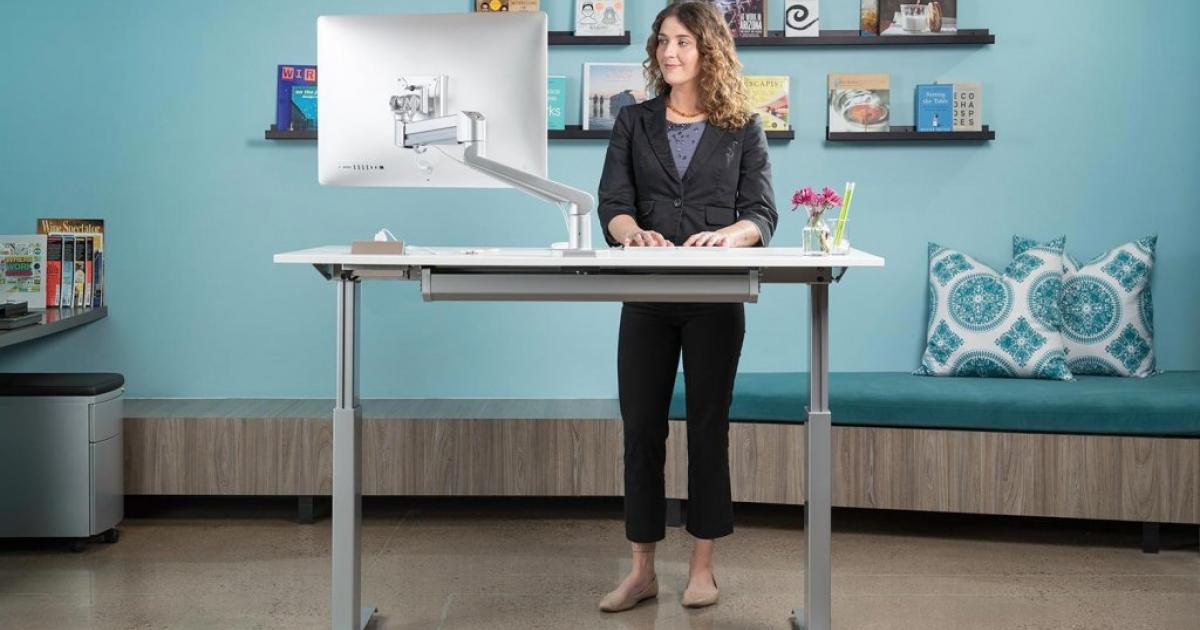How To Treat A Pinched Nerve
As humans, we have nerves extending from our brains throughout the rest of our body. Our nerves transmit signals to our limbs, organs, and every other part of our anatomy to tell it what to do. They also transmit feelings back to the brain, such as pain or pleasure. With a pinched nerve (also known as nerve compression), patients may feel pain radiating from the afflicted area. The pain may be sharp and make it difficult to move that part of the body without inflicting more discomfort. Pinched nerves aren not often an emergency, but it is important to seek proper treatment instead of ignoring them, as this may lead to further discomfort and damage.
Pinched nerves may be caused by minor or severe damage. For some, the pain is short-term, and for others, it lasts a long time. It is important to get a diagnosis as soon as possible so patients can get proper relief more quickly. Delaying the diagnoses will only lead to more complications. For some, the damage from a pinched nerve is irreversible. However, there are a handful of ways pinched nerves can be treated to reduce the symptoms and relieve the pain.
Attend Physical Therapy

Physical therapy is a popular solution for many injuries, including pinched nerves. During a physical therapy session, patients will work with a professional to stretch and strengthen their muscles. The therapist may use a variety of low-impact exercises, massages, and targeted stretches to relieve symptoms. They may also show patients exercises they can use at home to relieve pain. Patients can find out if professional physical therapy will help their pinched nerve by talking to their doctor. Therapy is not the right solution for everyone, but it is an effective alternative to surgery for many individuals.
Massages are another way to relieve the symptoms of a pinched nerve, but it is essential to get the right kind. A deep tissue massage may not be the best choice, due to the amount of pressure therapists use during the procedure. Instead, patients should opt for massages less likely to make their symptoms worse.
Use A Splint To Limit Motion

Depending on where the pinched nerve is located, using a split may be a helpful way to reduce symptoms. Movement often exacerbates the pain and inflammation associated with pinched nerves, making it harder to find relief. Splints limit how much motion patients can use with their afflicted body part, giving it more time to rest and heal.
Most commonly, individuals use a splint to limit motion in the hands and wrists. Some take their splints off at night, but this is not always necessary. It is important to choose a splint that fits well to provide maximum support, as a splint that's too loose may not provide the relief needed.
Surgical Repair

If the pinched nerve is severe enough, it may require surgery for long-term relief. Physical therapy, splints, and medication work for many patients, but surgery is often the best solution in particularly stubborn cases. Individuals with a pinched nerve that is not responding to other treatments should talk to a doctor about a possible surgical repair. Surgeries to repair pinched nerves are typically minimally-invasive. They require relatively short recovery periods and result in less pain than traditional procedures. The surgical procedure doctors will use depends on where the pinched nerve is. Common surgeries for pinched nerves include foraminotomies, laminectomies, microdiscectomies, anterior cervical discectomies, and spinal fusions.
Use Medication For Inflammation And Pain

There are dozens of medications on the market to relieve inflammation and pain, available both over-the-counter and by prescription. Over-the-counter pain relievers like non-steroidal anti-inflammatory drugs or oral corticosteroids help with the swelling and discomfort of pinched nerves. If the patient's pain is severe enough, their doctor may prescribe narcotic pain relievers or steroid injections. Steroid injections are a popular treatment for long-term relief, as they give the inflamed nerves extra time to recover (unlike narcotics or over-the-counter pain relievers). It is important to choose the right medication for inflammation and pain, and unsure individuals should speak with their doctor for the appropriate advice.
Rest The Affected Area

When the inflamed area is constantly being used, it is at risk for additional damage and pain. Like a broken bone or a torn ligament, it is crucial to rest the part of the body affected by the pinched nerve. When patients rest the affected area, they are giving it more time to heal, which will lead to faster relief. Individuals with a pinched nerve should get extra sleep and take it easy.
For many individuals, getting enough sleep and resting the affected area is all they need for it to heal on its own. By catching the injury early and resting it soon after, patients can give their body more time to recover without exacerbating the injury. When sleeping with a pinched nerve, it is essential to choose a position that relieves pressure from the affected area. It is also important to avoid movements that irritate the area or cause a flare-up of symptoms to limit additional injury.
Lose Excess Weight

In certain cases of pinched nerves, but not all, it may help patients to lose excess weight. One of the main risk factors for developing nerve compression is extreme weight changes. This includes both sudden weight gain and sudden weight loss. There have been cases of pinched nerves where the compression comes from body fat pushing on the nerve's surface. If the weight gain is sudden, it may add unusual force to the nerve's outside and lead to damage.
At the same time, a 2008 report found a patient with anorexia nervosa had pinched nerve injuries due to the extreme fat shifts in the patient's body from the extreme weight loss. If the compression is caused by excess fat, weight loss may help. However, the majority of cases are not related to weight gain. Therefore, doctors should first consider other treatment methods before defaulting to weight loss.
Develop An Ergonomic Environment

One of the ways to relieve pain from pinched nerves is to develop an ergonomic environment. Some patients might find their symptoms exacerbated by the setup of their workstations. If they switch to an ergonomic keyboard and mouse, there may be less pressure in their hands. Moving a computer to eye level can help reduce neck pain and compression pain in the shoulders. If individuals change their workstation to a standing desk, their spine will stay flexible and continue moving throughout the day, helping relieve back pain. A number of ergonomic workstation designs have been optimized for different types of pinched nerve pain. The best position is one that relieves pressure.
Change Of Posture

In some cases, a pinched nerve may be related to poor posture. Even if posture wasn't the cause, poor posture can make many kinds of nerve pain worse. If individuals sit or stand in the wrong posture for a long period, the body undergoes unnecessary stress. It tires the muscles and, over time, can even cause muscle and spinal damage. This is what leads to the pinched nerve.
Patients may want to look up posture guides to find out how they're actually supposed to be standing and sitting. As a general rule, the shoulders should be aligned with the hips when sitting. When standing, this remains true, and the hips should be aligned vertically with the feet. If it's hard for individuals to maintain an ideal posture with their furniture, they might use neck rests, adjustable chairs, or cushions to help improve their comfort.
Engage In Yoga

Individuals can reveal pressure and pain from pinched nerves by engaging in yoga and gentle stretches. With that said, patients should make sure to not stretch too aggressively or deeply, since this can worsen symptoms. Excessive stretching can cause the pinched nerve to become even tighter and more injured. If the exercises are causing any kind of discomfort or pain, patients should stop to make sure they don't cause further injury. Individuals who aren't sure what exercise regimens are ideal for them may benefit from consulting a physical therapist. Before and after stretching, patients should rest the nerve by avoiding excess movement.
Try Low-Impact Exercise

There are some light back stretching exercises that may be able to help pinched nerves in the shoulders, back, and neck. As previously mentioned, if individuals experience any discomfort or pain when exercising or stretching, they should stop. One exercise is side bends. Start standing with the hands on the hips and back straight. Then gently lean to the left and right to stretch the lower back.
A twist stretch begins in a sitting position with the legs spread to shoulder width. Put the right hand on the left knee and very gently pull the body forward to stretch the muscles in the back. Hold the position for five seconds, then repeat on the other side. Shoulder shrug stretches are just what they sound like. Stand straight, keep the arms to the sides, and shrug the shoulders up and back in a circle and repeat in the opposite direction. Do a set of fifteen.
